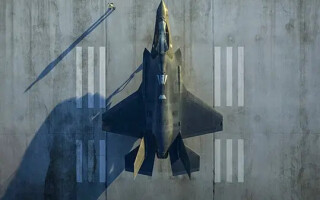Rugged handheld computers suit up with Android on the battlefield
StorySeptember 04, 2012
The Android Operating System (OS) has become the preferred OS for the military's dismounted situational awareness needs. Accordingly, Android has been enlisted as the backbone of ruggedized handheld computers utilized in Army Mobilization Network Integration Evaluation (NIE) activities and utilized in SA testing and evaluation using the Android OS and the Army's Software Engineering Directorate (SED) mobile application. Here's why.
The technology used for Situational Awareness (SA) creates a digital battlefield to show what is happening around the warfighter. Using this technology, soldiers can acquire information about what is going on around them and share that information with the rest of their platoon. In today’s environment of irregular warfare, more and more situational awareness technology is being used by the individual and smaller groups of soldiers rather than large military units. This shift in usage has successfully driven networked capabilities down to the small unit and soldier level. It has also provided a need for information to be integrated through rugged handheld computing devices in order to accommodate the plethora of situational awareness information provided to troops on the ground.
In theater, a warfighter might encounter a wide variety of digital data, communications, and tactical radio technology. Communication between different branches of the military or between a military branch and a government, nonmilitary agency, for instance, might employ the use of text messaging, video, and/or mapping technology, such as Blue Force Tracking technology, to communicate with each other and determine the locations of both friend and foe. Additionally, fast response times during conflict require quick and accurate communication. In this volatile environment, using the same handheld computer devices among all players in theater helps ensure continuity and optimization; additionally, using a uniform operating system such as the Android OS further allows all users to share a common SA capability within the harsh environment they are called upon to endure.
A common mobile application
The Army’s Software Engineering Directorate (SED) authors a common mobile application in support of the Nett Warrior and Joint Battle Command Platform programs. This application will be deployed to soldiers in theater and run on a dismounted system that must include an ultra-rugged computing device, software, and in some cases, Suite B security. The application should also support various communications solutions in order to receive and send friendly force position location and provide communication capability to and from soldiers and marines.
After an extensive trade study of several software operating systems by SED, the Android OS was selected over Apple iOS and Microsoft Windows Mobile. The study concluded that Android OS provided an open standard with the highest potential for developing mobile computer applications for use by soldiers in theater. Additionally, it was determined that the Android OS would be the common operating system of choice for future soldier devices, including rugged, mobile tablets, computers, and cell phones.
Military embraces the commercial market
The off-the-shelf cell phone model has been largely embraced by the U.S. military for a number of reasons. The military is able to benefit from the commercial cell phone’s use of standard interfaces such as the Universal Serial Bus (USB), standard treatment of devices that include battery management, and rapid growth in technology advancements. Additionally, as the commercial market drives advancement of phone and OS features, the military can rapidly take advantage of new features to match increasing capability sets. Recent capability sets that have been adopted by the military include an anti-spoofing GPS signal, Radio-Frequency Identification (RFID) tag readers, and chemical bio-detection applications. The military can also benefit from the large number of applications being developed to run on the Android OS, either natively or modified for military use.
The need for a rugged handheld computer
Military customers have many of the same “wants” as commercial customers: faster processor, lightweight, long battery life, and low cost; however, the most important capability that is needed is mission-critical reliability (Figure 1). Initially, computers were introduced to the battlefield and treated as “nice to have” systems. Today, in the networked era, computers are the entry point to the network for soldiers and leaders – and they must be relied upon to work, regardless of the environment. Computers are now “need to have” and mission critical.
Figure 1: Military customers have many of the same “wants” as commercial customers: faster processors, lightweight, long battery life, and low cost; however, the most important capability is mission-critical reliability. Pictured: The Army’s Network Integration Evaluation (NIE) 12.1, U.S. Army photo by Claire Schwerin, PEO C3T
(Click graphic to zoom by 1.9x)
Rugged computing devices need to meet IP67 and MIL-STD-810G specifications for use in extreme environments. These computing systems also need to be able to withstand extreme temperatures, moisture, impact, vibration, dust, and sand so they can be used in any outdoor extreme environment during mission-critical events, including the battlefield. For example, devices should be able to operate in temperatures ranging from -4 °F to +140 °F, survive water immersion, and driving rain. Additional validation testing in accordance with MIL-STD-810G specifications include altitude storage testing for one hour at 15,000 feet, solar radiation testing, 10-day humidity exposure, and exposure for 12 hours of blowing dust. Devices must also be able to survive drop shock testing onto each face, edge, and corner from a height of 4 feet, in addition to extreme vibration testing.
As a result of the military’s decision to leverage commercial industry technologies and move to a rugged handheld computer running the Android OS for dismounted SA, soldiers will have the ability to access secure information when tethered to a secure military tactical radio. Expanded communications should be enabled through various input/output connections, such as a USB host, USB client, Ethernet, and RS-232 devices, which are used by the majority of common tactical radios deployed in theater today. Additionally, once tethered to a secure tactical radio, a ruggedized handheld unit should display Position Location Information (PLI). It should also send or receive classified data such as pictures, spot reports, or chat messages from other military personnel and platforms such as wheeled or tracked vehicles, unmanned aerial vehicles, and other air platforms. Another significant advantage of such a ruggedized, Android-based handheld is its phone-agnostic characteristic. It is well known that the commercial industry is moving rapidly along with technical advances, so not being limited to a particular smartphone model allows the military user to take advantage of industry advances and rapidly get the latest technology into their hands.
Mapping and video capabilities also need to be enabled on rugged handheld devices. This is provided by the Blue Force tracking applications, unmanned aerial vehicle feeds, and tactical ground reporting, which give soldiers a 360-degree view of an area – similar to a Google street view – prior to their arrival at that location. For handheld devices to be able to handle this type of usage, they need dual-core processing power.
The Scorpion H2, manufactured by DRS Technologies, is a ruggedized, Android-based, handheld technology that is being used to test and evaluate SA using the Android OS and the SED mobile application (Figure 2). Specifically, the Scorpion handheld has participated in Army Mobilization Network Integration Evaluation (NIE) activities. The NIE activities are part of a new evolutionary approach to establish an integrated military network baseline to validate emerging capability sets for handheld devices used by soldiers in theater. NIE aids the Army in aligning network programs and development efforts under a series of coordinated soldier-driven exercises where soldiers test technical capabilities together in a mission-focused setting. The soldiers’ familiarity with COTS smartphone and Android OS technology has helped to greatly reduce the warfighter’s training and learning curve when mastering the Scorpion device.
Figure 2: DRS Technologies’ Scorpion H2 is an example of an Android-based, ruggedized handheld and has participated in SED/Android testing and the Army’s NIE activities.
(Click graphic to zoom)
Android satisfies the dismounted SA paradigm
It’s easy to see how moving to an Android OS for SA in dismounted operations allows the warfighter to leverage ruggedized technology adapted from the commercial industry for continual technological improvement on the battlefield. This also provides a means to easily implement the latest Android-based products and upgrades into the user’s system in a practical and user-friendly manner. Moreover, because of the popularity of the Android OS, it is apparent that enhancements and development of new applications will continue to expand, further benefiting Android OS users – whether civilian or military – for years to come.
Mark Wilson is Director of Engineering for DRS Technologies and has a background in mechanical engineering with a focus on vibration analysis and materials. With 30 years of experience working with defense contractors, he has been recognized internationally with awards for casting designs with magnesium and for U.S design patents for ruggedized electronics packaging. He can be contacted at [email protected].
DRS Technologies www.drs.com








